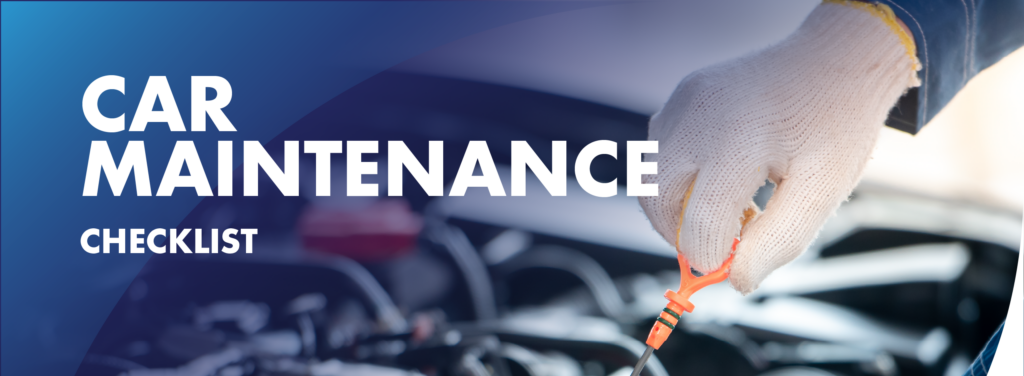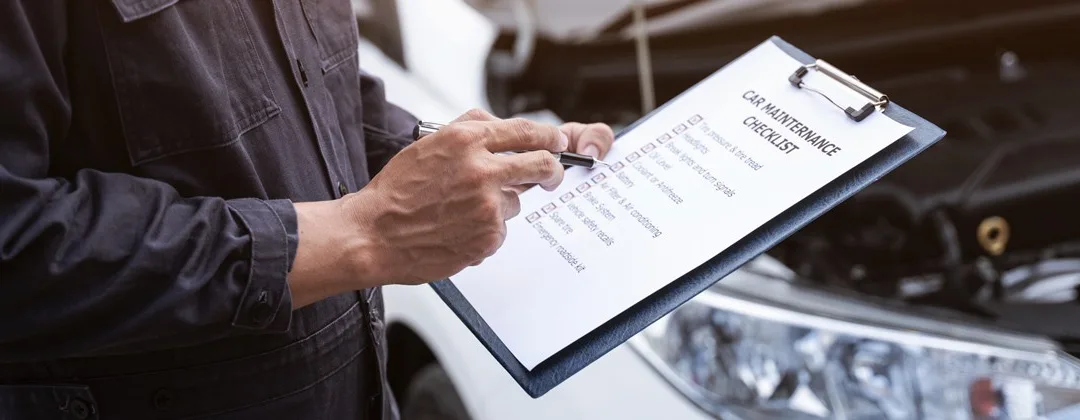Essential Tips for Keeping Your Vehicle in Top Condition
Regular car maintenance is crucial for ensuring the longevity and performance of your vehicle. By keeping up with routine maintenance, you can avoid costly repairs and unexpected breakdowns, ensuring a safer and smoother driving experience. Regular maintenance also helps improve fuel efficiency, which can save you money in the long run. Additionally, a well-maintained car retains its value better, making it a wise investment.
Basic Guide to Car Maintenance Tips
- Regular Oil Changes
- Regular oil changes are vital for keeping your engine running smoothly. Fresh oil lubricates engine parts, reducing friction and wear. It also helps in removing sludge and particles that can damage your engine. Check your vehicle’s manual for the recommended oil change intervals and stick to them.
- Checking and Replacing Air Filters
- Air filters prevent dirt and debris from entering the engine, ensuring it runs efficiently. Over time, air filters can become clogged, reducing airflow and engine performance. Check your air filter regularly and replace it according to the manufacturer’s recommendations to maintain optimal engine health.
- Inspecting Belts and Hoses
- Belts and hoses are critical components that keep your engine and other systems running smoothly. Regularly inspect them for signs of wear, such as cracks, fraying, or leaks. Replace any damaged belts or hoses promptly to prevent breakdowns and costly repairs.
Seasonal Car Maintenance
- Preparing Your Car for Summer
- As temperatures rise, it’s essential to ensure your car is ready for the heat. Check the coolant level and top it off if necessary to prevent overheating. Additionally, inspect your air conditioning system to ensure it’s functioning correctly, providing you with a comfortable ride during hot summer days.
- Winter Car Maintenance
- Cold weather can be harsh on your vehicle, so preparing it for winter is crucial. Check your battery’s condition, as cold temperatures can reduce its efficiency. Also, ensure your tires are properly inflated and have sufficient tread to handle slippery conditions. Regularly check tire pressure, as it can drop in colder weather.
Tire Maintenance
- Importance of Regular Tire Checks
- Tires are your car’s primary contact with the road, making their maintenance essential for safety and performance. Regular tire checks help identify issues early, such as uneven wear or damage, allowing for timely repairs or replacements.
- How to Check Tire Pressure
- Proper tire pressure ensures optimal handling, fuel efficiency, and tire longevity. Use a tire pressure gauge to check the pressure at least once a month and before long trips. Refer to your vehicle’s manual for the recommended pressure levels and adjust accordingly.
- Rotating Tires and When to Do It
- Tire rotation helps ensure even wear across all tires, extending their lifespan and improving performance. It’s typically recommended to rotate your tires every 5,000 to 7,500 miles, but consult your vehicle’s manual for specific guidelines.
- Checking for Wear and Tear
- Regularly inspect your tires for signs of wear and tear, such as tread depth, cracks, or bulges. Use the penny test to check tread depth: insert a penny into the tread with Lincoln’s head facing down. If you can see the top of Lincoln’s head, it’s time to replace the tire. Identifying and addressing tire issues early can prevent blowouts and ensure a safer driving experience.

Fluid Checks
Regularly checking and maintaining your car’s fluids is essential for keeping it running smoothly and preventing mechanical issues. Here are some key fluid checks to perform:
- How to Check Engine Oil
- Ensure your car is on a level surface and the engine is cool. Locate the oil dipstick, pull it out, and wipe it clean. Reinsert the dipstick fully, then pull it out again to check the oil level. The oil should be between the minimum and maximum marks. If it’s low, add the appropriate type of oil gradually, checking the level as you go.
- Checking and Topping Off Brake Fluid
- Locate the brake fluid reservoir, typically found near the back of the engine bay. Check the fluid level against the marked lines. If it’s below the minimum mark, top it off with the recommended brake fluid type. Ensure the cap is tightly closed after refilling to prevent contamination.
- Inspecting and Refilling Coolant
- Check the coolant level in the reservoir when the engine is cool. The level should be between the ‘min’ and ‘max’ marks. If it’s low, add a mixture of coolant and water as specified by your vehicle’s manufacturer. Be cautious when opening the coolant cap, as the system can be pressurized.
- Power Steering and Transmission Fluid Checks
- For power steering fluid, locate the reservoir and check the fluid level using the dipstick or the markings on the side of the reservoir. Add fluid if necessary. For transmission fluid, consult your car’s manual, as checking this fluid often requires the engine to be running and warm. Use the dipstick to check the level and add the recommended fluid type if needed.
Battery Maintenance
A well-maintained battery is crucial for reliable vehicle operation. Here are some tips to ensure your battery stays in good condition:
- Signs of a Failing Battery
- Common signs of a failing battery include slow engine cranking, dim headlights, and the check engine light turning on. If you notice any of these symptoms, have your battery tested and consider replacing it if necessary.
- How to Clean Battery Terminals
- Corrosion on battery terminals can prevent your car from starting. To clean them, disconnect the battery terminals, starting with the negative terminal. Use a mixture of baking soda and water and a wire brush to clean the terminals. Reconnect the terminals, starting with the positive terminal.
- When to Replace Your Car Battery
- Most car batteries last between 3 to 5 years. If your battery is older than this or shows signs of failing, it’s wise to replace it to avoid unexpected breakdowns.
Brake System Maintenance
Keeping your brake system in top condition is crucial for safety. Here’s what to look for:
- Importance of Brake Checks
- Regular brake checks ensure your brakes are functioning correctly, preventing accidents and extending the lifespan of your brake components.
- Recognizing Signs of Brake Wear
- Common signs of brake wear include squeaking or grinding noises, a soft brake pedal, and longer stopping distances. If you experience any of these, it’s time to inspect your brakes.
- When to Replace Brake Pads and Rotors
- Brake pads typically need replacing every 25,000 to 50,000 miles, depending on your driving habits. Rotors may last longer but should be inspected regularly for wear and warping. Replace them if they are below the minimum thickness or damaged.
Lights and Electrical System
Properly functioning lights and electrical systems are vital for visibility and safety. Here’s how to maintain them:
- Regularly Checking Headlights, Taillights, and Indicators
- Regularly inspect all exterior lights to ensure they are working correctly. Replace any burnt-out bulbs promptly to maintain visibility and comply with road safety regulations.
- How to Replace Bulbs
- Consult your vehicle’s manual for specific instructions on replacing bulbs. Generally, you can access bulbs from the back of the light housing. Disconnect the electrical connector, remove the old bulb, and install the new one, ensuring it’s securely in place.
- Inspecting the Car’s Electrical System
- Periodically check the car’s electrical system, including the battery, alternator, and wiring. Look for loose connections, frayed wires, or other signs of wear. Address any issues promptly to avoid electrical failures.
Interior and Exterior Care
Maintaining both the interior and exterior of your car is essential for preserving its value and ensuring a pleasant driving experience. Here are some tips to help you keep your car looking and feeling new:
- Keeping the Interior Clean and Maintained
- Regularly vacuum the seats, carpets, and floor mats to remove dirt and debris. Wipe down the dashboard, steering wheel, and other surfaces with a suitable cleaner to prevent dust buildup. Use protectants on leather seats and trim to prevent cracking and fading.
- Washing and Waxing Your Car
- Wash your car regularly to remove dirt, grime, and road salt, which can damage the paint. Use a gentle car shampoo and a soft sponge or mitt. After washing, apply a quality wax to protect the paint and give your car a shiny finish. Waxing also helps to repel water and contaminants, making future cleaning easier.
- Protecting Your Car’s Paint
- Park in the shade or use a car cover to protect your car’s paint from the sun’s UV rays, which can cause fading and oxidation. Promptly remove bird droppings, tree sap, and other contaminants to prevent them from damaging the paint. Consider applying a paint sealant or ceramic coating for long-lasting protection.
Advanced Maintenance Tips
- How to Read and Understand Your Car’s Manual
- Your car’s manual is a valuable resource that contains essential information about maintenance schedules, fluid types, and troubleshooting tips. Take the time to read and understand it, and refer to it whenever you’re unsure about a maintenance task or need specific information about your vehicle.
- Benefits of Professional Maintenance Services
- Professional mechanics have the expertise and tools to perform thorough inspections and maintenance tasks that may be challenging for the average car owner. Regular visits to a trusted mechanic can help identify potential issues early and ensure your car receives the best care possible.
- DIY vs. Professional Maintenance Tasks
- While many maintenance tasks can be done at home, such as oil changes and air filter replacements, some tasks are best left to professionals. Complex repairs, advanced diagnostics, and major component replacements often require specialized knowledge and equipment. Knowing when to seek professional help can save you time, money, and potential headaches.
Common Maintenance Mistakes to Avoid
- Ignoring Warning Lights
- Warning lights on your dashboard are there for a reason. Ignoring them can lead to severe damage and costly repairs. Address any warning lights promptly by consulting your manual and seeking professional assistance if necessary.
- Neglecting Regular Service Intervals
- Sticking to the manufacturer’s recommended service intervals is crucial for maintaining your car’s health and performance. Regular servicing helps catch minor issues before they become major problems and keeps your car running smoothly.
- Using Low-Quality Parts and Fluids
- Using cheap or incorrect parts and fluids can cause significant damage to your vehicle. Always use high-quality, manufacturer-recommended parts and fluids to ensure your car operates efficiently and lasts longer.
Conclusion
Regular car maintenance is key to ensuring your vehicle’s longevity, performance, and safety. By keeping up with routine checks and addressing issues promptly, you can avoid costly repairs and enjoy a smoother driving experience.
We encourage you to maintain regular car care routines and seek professional help when necessary. If you have any questions or need assistance with your car’s maintenance, don’t hesitate to contact our auto insurance office. We’re here to help you keep your car in the best possible condition.
